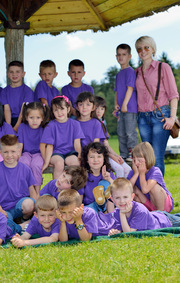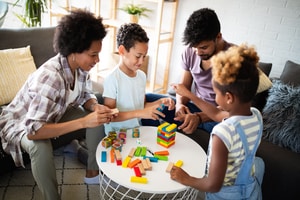Beyond The Four Walls: The Benefits Of Diverse Learning Environments For School Lessons
Traditional classroom settings have long been the cornerstone of education. Throughout the years, they have provided a structured environment for students to learn and interact. However, as our understanding of effective teaching evolves, there is a growing recognition of the limitations of confining education within four walls.
As such, there are many benefits to reap from embracing diverse learning environments for school lessons outside the classroom.
Beyond the confines of traditional classrooms, students encounter a rich tapestry of experiences that stimulate engagement, foster creativity, and cater to individual learning needs. The traditional chalk-and-talk model gives way to innovative teaching methodologies that leverage technology to enhance learning outcomes. The need for adaptability in learning environments has never been more apparent, urging educators to explore alternatives beyond the conventional. Let’s explore the advantages of diversifying the educational experience for our students.
The Evolving Educational Landscape
As our educational landscape evolves, so must our approach to teaching. Technology integration has played a pivotal role in reshaping traditional teaching methodologies. Educators are leveraging digital tools to create interactive and dynamic lessons that cater to students’ diverse learning styles. Embracing this shift allows for a more personalised and adaptable educational experience. By incorporating technology, teachers can ensure their lessons remain engaging and relevant in an ever-changing world.
Recognising the need for adaptability in learning environments is crucial. While effective in some aspects, traditional methods may not fully prepare students for the challenges they will face beyond the classroom. Incorporating diverse learning environments allows you to foster a sense of resilience and adaptability in students. Showing them various teaching methodologies and settings equips students with the skills to navigate an increasingly complex world.
Understanding Diverse Learning Environments
Diverse learning environments encompass a broad spectrum of approaches beyond the conventional classroom setup. In this context, diversity extends beyond cultural or demographic factors to encompass the variety of experiences and teaching methods available. It involves creating an inclusive space accommodating different learning styles, strengths, and challenges. To truly understand diverse learning environments, you must first acknowledge each student’s uniqueness and appreciate the value diversity brings to the learning process.
Moving beyond traditional classroom boundaries requires a shift in mindset. Embracing diversity involves actively seeking out ways to provide inclusive and varied educational experiences. This might involve integrating real-world applications into lessons, incorporating guest speakers from different professions, or utilising multimedia resources that reflect a range of perspectives. In doing so, you can create an environment that mirrors the complexities of the world students will encounter outside the classroom.
Flexibility In Physical Spaces
The physical layout of a classroom plays a significant role in shaping the learning experience. Flexibility in physical spaces allows for a departure from the traditional rows of desks, fostering a more dynamic and interactive atmosphere. You can create learning environments that adapt to the needs of different lessons and activities. Outdoor spaces also offer a unique opportunity to break free from the confines of four walls, providing a breath of fresh air for both students and teachers.
To achieve this flexibility, consider modular furniture arrangements that can be easily reconfigured. This allows seamless transitions between individual work, group activities, and class discussions. Moreover, incorporating outdoor spaces into the learning environment offers a change of scenery that can invigorate students and enhance their overall engagement. You empower yourself to tailor the learning environment to the specific needs of your students by embracing flexible physical spaces.
Arranging School Trips To Escape Classrooms
As mentioned, one powerful way to break away from the traditional classroom setup is by organising school trips. These excursions offer students a chance to escape the confines of familiar surroundings and immerse themselves in real-world learning experiences. The benefits of such trips extend beyond acquiring subject-specific knowledge, providing students with a holistic understanding of the world around them. Careful planning is essential to achieve successful school trips.
Select destinations that align with the curriculum, ensuring the experience enhances classroom learning. Practical considerations, such as transportation, safety measures and necessary permissions, must be addressed. Organising these should not be delayed. Arrange transport as soon as possible to help ensure that you can lease a minibus for the trip. You can enquire online today at The Minibus Centre for further information about minibus leasing.
Additionally, asking for permission and implementing safety measures will help ensure the trip is safe. Furthermore, incorporating interactive elements, such as guided tours and hands-on activities, enhances the trip’s educational value. You can create memorable learning experiences that leave a lasting impact on students by organising school trips for your class to enjoy.
Collaborative Learning Opportunities
Education is not just about absorbing information but also about developing essential collaborative skills. Creating opportunities for collaboration within diverse learning environments enhances the overall educational experience. Instead of the traditional solitary approach, you can foster an environment where students actively engage with their peers, sharing ideas and working together to solve problems.
One effective strategy is incorporating group projects that encourage teamwork and creativity. This collaborative approach mirrors real-world scenarios where individuals must work together to achieve common goals. Technology also plays a role in facilitating collaboration, with online platforms allowing students to collaborate seamlessly, even if physically apart. By promoting collaborative learning opportunities, you can prepare students for the collaborative nature of many professions and empower them with vital interpersonal skills.
Cultivating Creativity
Creativity is a cornerstone of success in the modern world, and diverse learning environments provide fertile ground for its cultivation. Instead of strictly adhering to a rigid curriculum, introduce activities encouraging students to think outside the box. From open-ended projects to thought-provoking discussions, cultivating creativity involves creating an atmosphere that values and nurtures innovative thinking.
Teachers can incorporate creative learning activities that challenge students to explore different perspectives and solutions. Artistic expression, group sessions, and problem-solving activities are effective tools. Embracing diverse learning environments allows you to step away from a one-size-fits-all approach, fostering an environment where each student’s unique creative potential can flourish.
Tailoring Learning To Individual Needs
Recognising the diversity of student needs is paramount to effective education. Tailoring learning experiences to individual requirements ensures that each student can progress at their own pace and in a manner that suits their learning style. Personalised learning approaches involve understanding each student’s strengths, challenges, and preferences, allowing you to provide targeted support where needed most. One strategy is using adaptive learning technologies that adjust the difficulty level of tasks based on individual performance.
Additionally, you can implement differentiated instruction, tailoring teaching methods to cater to diverse learning styles within the same classroom. You should try venturing into the realm of diverse learning environments; assessing these approaches’ impact on students’ overall academic and personal development becomes crucial. Research studies consistently demonstrate the positive influence of such strategies on engagement, critical thinking skills, and long-term academic success.
However, it’s equally important to acknowledge the challenges and address them constructively. Implementing diverse learning environments may face resistance or logistical hurdles, but these should not deter you from pursuing innovative approaches. Collaborative efforts, continuous professional development, and ongoing evaluation are essential to a successful transition.
Ultimately, the benefits of embracing diverse learning environments for school lessons are vast and transformative. Adopting these strategies will help you empower students to navigate the complexities of the modern world, fostering adaptability, creativity, and a genuine appreciation for diversity.




